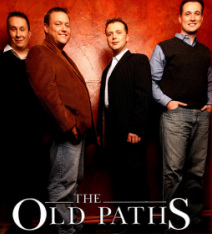

The ending point is the screen or event that ends the path you want to explore. It appears as the leftmost column in the visualization.įor example, begin an ecommerce path with a page that offers choices for different categories of shoes (e.g., men's, women's, athletic, etc.) The starting point is the screen or event that begins the path you want to explore. Path exploration uses a tree graph to illustrate the event stream, the collection of events users triggered and the screens they viewed.Ī path exploration graph consists of the following elements: You can then configure the rest of the exploration in the same way as a forward path.

Then, you can use that insight to improve the user experience. You can select an event, like a purchase or conversion, and explore the different paths your users take to reach that event. Backwards pathing lets you select a desired event or page and explore how your users got to it. See your users' previous stepsīy default, path exploration shows your users' actions working forward from a specific event or page. More nodes beyond the top 20 are grouped into an "Others" node. Click + More to add up to 20 nodes per step. Nodes that appear in gray are at the end of the user's path and can't be expanded.īy default, the graph shows the top 5 nodes in a step. (Data points in a path exploration are called nodes.)Ĭlick a node to expand it and add a new step. To see the next steps your users took, click a data point in the graph. You will also have the option to view more screens if available. To the right is STEP +1, which shows the top 5 screens that your users viewed or events they triggered after that starting point. On the left is the starting point you selected. Under STARTING POINT, click to choose a dimension, or drag and drop a dimension from the NODE TYPE list to the STARTING POINT.Ĭhoose the event name, page title, page path, screen name, or screen class as the starting node. Then, you will select the kind of data to use as the starting point or ending point of your exploration. If you click Start over, you can select the starting point or ending point of the exploration. You can click Start over in the top right to start with a new path exploration. To get started, Analytics provides a sample implementation. At the top of the screen, select the Path exploration template.He is the author of, among others, The Secret Library: A Book-Lovers’ Journey Through Curiosities of History and The Great War, The Waste Land and the Modernist Long Poem.

The author of this article, Dr Oliver Tearle, is a literary critic and lecturer in English at Loughborough University. We also recommend The Oxford Book of English Verse – perhaps the best poetry anthology on the market (we offer our pick of the best poetry anthologies here). The likening of the woman to a ghost, and the description of the ‘giant’ husband as ‘corpse-like’ – and the collection of women’s skulls he carries in his belt – make for a suitably Gothic poem.Įxplore more classic poetry with these poems about the English landscape, these classic poems about the coast, and these poems about school. It’s about a woman who walks out on her husband in order to wander the moors, only to be hunted down by him and brought back home. Sylvia Plath, ‘ The Snowman on the Moor’.Ī number of the poems of Sylvia Plath (1932-63) contain Gothic elements and tropes, and ‘The Snowman on the Moor’ makes our top ten pick of great Halloween poems because it’s got more than its fair share of them. Listen to a 1945 recording of Thomas reading ‘Poem in October’ here.ġ0. The poem celebrates his walks in Laugharne, a small Welsh town where Thomas and his wife settled following their marriage in 1937. This poem was written in 1944 when Thomas turned 30. Rilke, who also wrote one of the most wonderful experimental novels about walking around Paris, here salutes the value of walking as an act which transforms us in ways that are almost spiritual.Īrguably the first modernist poem written in English, this short poem from 1908 begins with Hulme (pictured left) sketching out the poem’s autumn setting and telling us how he ‘walked abroad’ into the countryside, where he notices the moon and is inspired to make an unlikely comparison… ‘So we are grasped by what we cannot grasp’, as the English translation of this wonderful short poem has it.


 0 kommentar(er)
0 kommentar(er)
